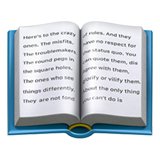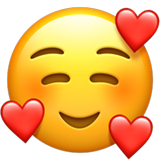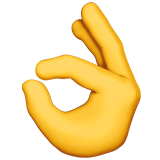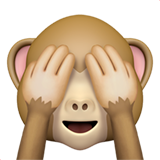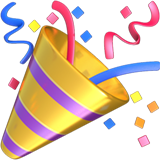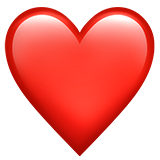📙 Emoji meaning, interpretation and origin
Dive into the colorful world of emojis and discover how they bring our digital communication to life. Learn about the meaning of emojis, when to use them, and the secrets behind these little symbols.
You got a message with emojis but aren't sure what your contact meant? 🤔 Are you looking for the perfect emoji to express your feelings on WhatsApp? Do you want to liven up your messages without stepping on anyone's toes? Welcome to the ultimate emoji reference guide! Here, you'll learn the meanings behind emojis, how to use them effectively, and which ones you should avoid in your communication. 🕵️♀️
We're here to help you understand the meaning of different emojis, how they're interpreted in different contexts, where they originally came from, and how and when to use them. Find out how the same emoji can elicit different reactions in different cultures and age groups and learn how to use it in your communication. Whether in everyday conversations or at special occasions, emojis make our messages more colorful and expressive.
Get inspired and become an emoji expert! Have fun exploring and discovering!
Historical Development and Cultural Differences
Birth of Emojis
Let's take a quick detour into history. No worries, we'll be back soon. If you're not into history, just skip to the next chapter 👉️Emoji Meanings: One Picture, a Thousand Possibilities. So, where did our little friends actually come from?
The word "emoji" comes from Japanese and means "pictogram." It's what we call a pictogram, logogram, or ideogram. Emojis are used in electronic messages and on websites to express emotion in text-based conversations. (Source: Wikipedia - Emoji)
Piktogramme and other technical terms simply mean that an emoji is a stylised image that represents a person, object, concept or action. They can visually convey complex information or emotions without words.
Now it gets a bit more historical and detailed, then we're done. The term "Emoji" is composed of the Japanese characters:
- 絵 (e) for "picture"
- 文 (mon) for "expression" and
- 字 (ji) for "letter."
The history of smiling faces goes back to the late 19th century, when simple facial expressions were used as a kind of "printer's joke." In 1938, the philosopher Ludwig Wittgenstein wrote in his "Lectures and conversations on aesthetics, psychology and religious belief" that simple drawings of faces could be more flexible and versatile than words.
The modern emojis we know today were first developed in the late 1990s by Shigetaka Kurita. He worked for the Japanese mobile carrier DoCoMo and came up with the first emoji symbols as part of the i-mode project. These early digital emojis were pretty simple because of the technical limitations of the mobile phones of that time—mostly monochrome and only 12x12 pixels in size. Since they weren't copyrighted, other Japanese telephone companies quickly developed their own emoji-capable devices, which led to rapid adoption.
Spread and Success of Emojis
The small symbols of our daily communication have undergone a remarkable development. Consider that, for most people, personal communication - whether between friends or relatives - up to this point was almost exclusively via handwritten letters. ✉️
Today, everyone uses emojis, even the grandma next door, thanks to the so-called Unicode standard. Sorry, the last technical detour, promised!
Since the Unicode standard was introduced in 2010, emojis have really taken off globally. You can think of the Unicode standard as an international character set. It's a kind of rulebook that makes sure that emojis are displayed similarly on different platforms, devices, and around the world. Emojis are now an essential part of digital communication, playing a key role in nonverbal communication across cultures and languages. Despite their global similarities, there can be differences in interpretation. Let's take a closer look.
Emoji Meanings: One Picture, a Thousand Possibilities
The interpretation and perception of the same emoji can vary greatly depending on cultural background and context. Age, gender, culture, language, and, of course, the situation can completely change the meaning of an emoticon. An emoji that conveys a harmless or even affectionate message to one person can elicit a completely different reaction from another.
While younger people often use emojis creatively, playfully, and in reference to current trends, baby boomers tend to use emojis more conservatively and according to their original meaning. For some, a winking smiley 😉 may be a fun addition that conveys a light tone, while for others, it can provocative.
An example of cultural differences is the famous - excuse the expression - "poop emoji" 💩. In Western cultures, it is used more humorously or ironically, but in other parts of the world, it can be considered very rude or even offensive. In a professional context, it might not be appropriate to use it. This shows that cultural norms and habits can play a significant role in understanding the correct meaning of an emoticon.
The gender of the sender can also have an impact. A heart emoji ❤️ between men after a night out might simply mean a thank you or a platonic affection (friendship). When a girl sends a heart to a boy, it can have a completely different meaning and quickly be misinterpreted as a romantic gesture. These differences in perception show how important context and the relationship between chat partners are.
Things get particularly interesting with emojis that allow for ambiguous interpretation. A typical example is the eggplant emoji. Sure, it shows an eggplant and might simply mean: "Don't forget to bring me an 🍆 from the store!" But it can also mean something completely different, especially in a sexual context. #ifyounkowwhatimean 😏
This clearly shows how strongly the meaning of an emoji depends on the context - what is obvious in a harmless conversation about groceries can suddenly seem suggestive in another conversation. So: No eggplants to the boss, unless he's asking for a shopping list!
These examples show that emojis are a diverse and sometimes even complex language that can be interpreted differently depending on the context, sender, and recipient. Those who are aware of these nuances can avoid misunderstandings and pitfalls.
Emoji Meanings – WhatsApp, Facebook, Instagram, and Co.
There are not only differences between cultures and age groups but also between the various messaging services and social networks like WhatsApp, Facebook, Instagram, and TikTok. Each of these platforms has its own user culture and way of communication, which is also reflected in the use and interpretation of emojis. Additionally, the colorful icons also look a little different. Let's dive into the world of messengers:
Emoji Meanings WhatsApp
On WhatsApp, the most widely used messenger in Europe, excluding Facebook (source: Statista), emoticons are often used in personal messages or status updates to express emotions more clearly or to make informal conversations more lively. The message is often very direct and emotional, as the platform is primarily used for private communication, although more and more companies have recently discovered the Messenger for themselves. The familiarity of the users plays a big role here, which leads to the fact that emoticons are often used in the context of insider jokes or personal meanings. There are also more classic emoticons used, since the platform is often used by older people - we will not call them "boomer".
Emoji Meanings Instagram
On Insta, as it is affectionately called (source: Oxford Learner's Dictionaries), emoticons are often used to visually enhance posts and comments. Particularly popular are the ❤️ or the fire 🔥 to express agreement or admiration. The meaning of emoticons on Instagram is often aesthetic, as the platform is highly visual.
Emoji Meanings Facebook
We've already mentioned older generations of internet users: Facebook is the absolute Baby Boomer platform, and accordingly, the users of the platform are getting older. (source: Statista) Emojis are used in various ways on Facebook, appearing in both status updates and comments. Here, a wide range of emoticons is often used to express opinions, emotions, and reactions to posts. Since Facebook is a platform used for both personal and public communication, you'll find almost all emojis here - unfortunately, many angry or negative smileys as well.
Emoji Meanings TikTok
Some people have never heard of it, but in countries like Japan it is the number one social network. And among our younger users, it is hard to imagine life without it. TikTok thrives on short, creative videos, so emoticons play a big role in comments and video descriptions. They are often used in a humorous and youthful way, with a preference for ironic or double-entendre emoticons. For example, the eye emoji 👀 is often used on TikTok to express interest or surprise.
Emoji Meanings Snapchat
On Snapchat, emojis are not only used as a means of expression in messages but often have specific meanings within the app. Small emojis appear next to friends' names, symbolizing the status of the friendship. A yellow heart 💛 means that you and this person are "best friends" - you send each other the most snaps. A red heart ❤️ indicates that you have been best friends for two weeks in a row. These special meanings of emojis on Snapchat show how emojis can go beyond their general usage and develop entirely new meanings.
Overall, these differences show that the choice of emojis and their interpretation can depend on the respective platform. You should always be aware of how emojis are understood on different platforms to avoid misunderstandings and make your communication even more "on point."
Emoji Categories and Their Meanings
Emojis can, of course, be divided into different categories, each covering different aspects of human emotions, actions, objects, and concepts. These categories help to get an overview of the hundreds of images that flicker across our screens every day.
Smileys & Faces
Smileys and faces are the most versatile and used Emojis because they can express a wide range of human emotions. And of course because they are the closest to us. Unless you are an alien or an iguana. By the way, smileys are just emojis that represent a face. #learnagain
Here are some examples:
- 😊 Smiling face with smiling eyes: This emoji symbolizes friendliness, contentment, and is often used to express gratitude or positive emotions.
- 😢 Crying face: The crying face expresses sadness or grief, but is also sometimes used ironically to show mild regret.
- 😎 Face with sunglasses: This relaxed face stands for coolness, confidence, or simply a laid-back attitude.
Gestures and Hands
Hand gestures are so important that they deserve their own category. They stand for approval, rejection, or gratitude. Here are some examples:
- 👍 Thumbs up: Stands for approval, support, or "Okay." It is popular worldwide, but in some cultures, it can be considered offensive.
- 👏 Clapping hands: This emoji expresses applause, recognition, or congratulations. #hurra
- 👋 Waving hand: The waving hand emoji is used to say "Hello" or "Goodbye." Who would have thought!
People & Professions
This category includes visualizations that depict people in different life situations, professions, or roles:
- 👩⚕️ Woman in medical uniform: A doctor or medical staff and is often used to discuss health topics.
- 👨🏫 Man in front of a blackboard: The teacher emoji is used to represent education, teaching, or general knowledge transfer. Or simply to gossip about your teacher.
- 👮 Policeman: This colleague stands for protection, security, or the police and is often used in discussions about law and order.
Animals & Nature
Cute animals, plants, and other nature objects are found in this category. They are often used to express feelings, characteristics, or simply nature itself. Here are some examples:
- 🐶 Dog face: Often symbolizes affection, loyalty, or friendship, as the dog is considered "man's best friend." But it can also mean: My dog pooped on the lawn and grinned while doing it.
- 🌳 Tree: Symbolizes nature, environmental awareness, or calmness.
- 🐦 Bird: The bird stands for freedom, peace, or a connection to nature.
Food & Drink
Discover the variety of culinary delights. Here are some really tasty examples:
- 🍕 Pizza slice: A universal symbol for a quick snack, leisure, or simply the enjoyment of pizza. #delicious
- 🍎 Red apple: This emoji can symbolize health (in reference to the saying "An apple a day keeps the doctor away") or simply the fruit itself.
- ☕ Coffee cup: Need a break? The coffee emoji stands for breaks, relaxation, or the enjoyment of coffee and is often used in morning messages.
Activities, Hobbies & Travel
Leisure activities, sports, hobbies, travel, and everything that is fun. Here are some examples:
- ⚽ Soccer ball: Represents enthusiasm for a soccer game or general fitness.
- 🎸 Electric guitar: Symbolizes music, especially rock or pop, and is often used in discussions about concerts or music taste.
- ✈️ Airplane: Off to vacation! The plane symbolizes travel, adventure, or vacation. It is often used in connection with travel plans or international news.
Objects & Symbols
Objects, symbols, and concepts. The basement is full of stuff!
- 💡 Light bulb: Got an idea? The light bulb represents inspiration or a "eureka" moment and is used to express creative thoughts.
- 📱 Smartphone: Actually a modern phone but can stand for technology, communication, or social media.
- 🔒 Lock: Everything's safe! This padlock can symbolize security, privacy, or the conclusion of something.
So, enough background information on emojis, meanings, origins, and other unnecessary knowledge. Dive into the world of these little colorful images and let yourself be surprised!
